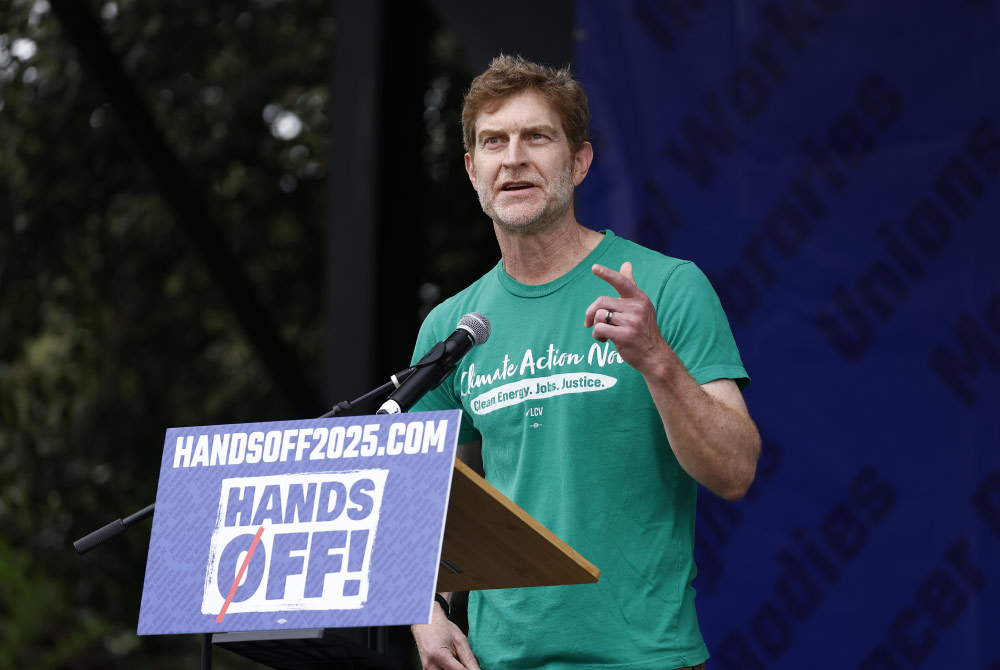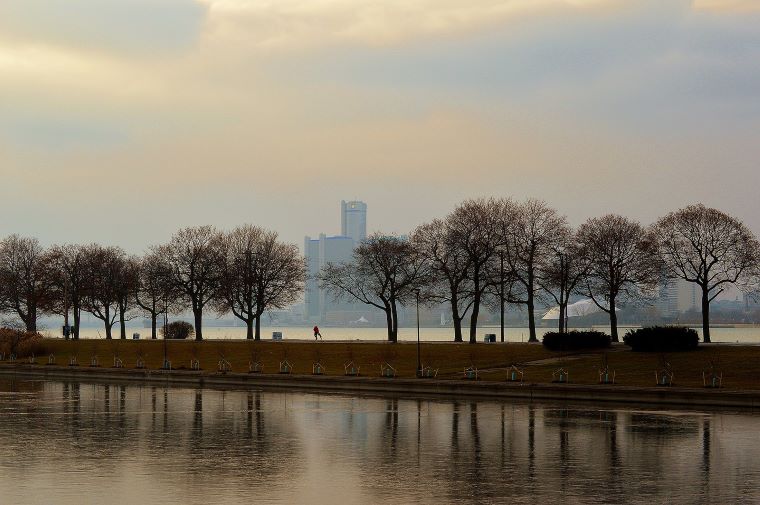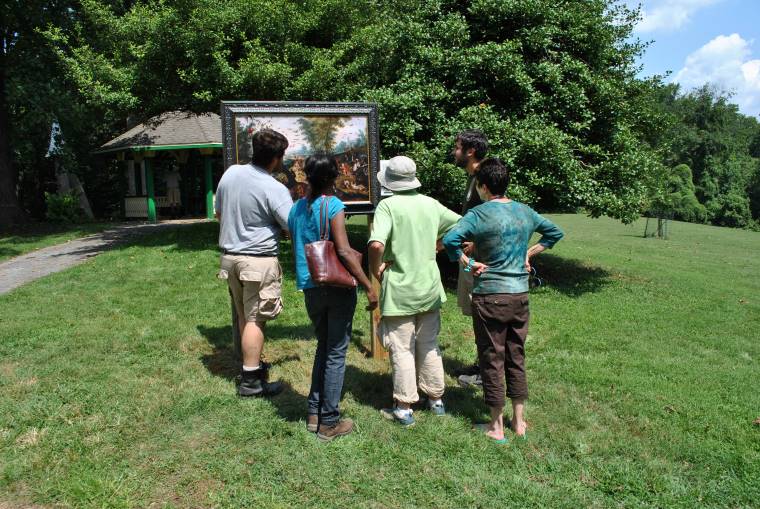
Top 5 Stories Worth Reading — April 2025
Apr 29, 2025
 Belle Isle Park in Detroit, MI was one of the projects funded by the Outdoor Recreation Legacy Partnership (ORLP) Program in 2015.
Photo credit: Tracie Michelle via Wikimedia Commons
Belle Isle Park in Detroit, MI was one of the projects funded by the Outdoor Recreation Legacy Partnership (ORLP) Program in 2015.
Photo credit: Tracie Michelle via Wikimedia Commons
As we saw during July, Earth’s hottest month on record, the escalating threat of extreme heat is increasingly concerning for the health and safety of our communities. In Phoenix, a record-breaking streak of over thirty days exceeding 110℉ overwhelmed emergency rooms and led to skyrocketing electricity costs as well as related emissions from cooling homes. Temperatures above 101℉ in Florida waters have bleached entire coral reefs, damaging crucial wildlife habitat and communities essential to the wellbeing of both marine and human life. And more recently, a flash drought – meaning it was so hot that the atmosphere was sucking moisture out of the ground and plants – created the extremely dry conditions that made the devastating wildfires in Hawaii all the more severe.
The gravity of this crisis is evident, jeopardizing both human health and that of the environment. Urban communities face the most significant risks, primarily because urbanization has led to a significant reduction in green spaces in most cities across the US, driven by the demand for new housing and modern infrastructure. Fortunately, a proven solution exists: green spaces significantly reduce heat indexes. Emphasizing and supporting green space initiatives will not only improve the well-being of our communities but also play a crucial role in combating climate change.
The urban heat island effect stems from human-made structures such as buildings and roads, which possess a higher capacity to absorb and radiate the sun’s heat compared to natural landscapes. Essentially, in heavily developed areas, surfaces and structures act as significant thermal masses. Moreover, human activities contribute to this effect, as vehicles, AC units, and buildings emit extra heat into the urban environment. Consequently, urban communities experience daytime temperatures approximately 1-7℉ higher than outlying areas.
Primarily, the intensified heat leads to a surge in the demand for air conditioning to cool buildings. During extreme heat events, this heightened demand can overload power systems, leading to potential power outages. Electricity suppliers also typically rely on fossil fuel plants to meet the peak AC demands, resulting in a significant increase in air pollution and greenhouse gas emissions.
Heat-related deaths and illnesses such as respiratory difficulties, heat cramps, heat exhaustion, and non-fatal heat stroke are common health risks experienced during heat waves. Among those most vulnerable to such conditions are older adults, young children, low-income and minority populations, outdoor workers, and individuals with pre-existing medical conditions, who suffer from heat-related illnesses at the highest rates.
Marginalized communities endure the most severe environmental burdens related to insufficient green space as a continued effect of environmental racism. Indeed, studies show that low-income areas have 15% less tree cover than wealthier ones. Low-income individuals face considerable challenges in accessing and affording adequate air conditioning and health insurance, leaving them with fewer resources to cope with extreme heat. Additionally, they may take on jobs that require them to work outdoors, often prolonging heat exposure while requiring significant exertion, sometimes with little protection or in insulated protective equipment – both of which can be dangerous. Extreme heat exacerbates existing inequality, disrupting labor productivity, damaging crops, and elevating mortality rates, thus imposing severe economic and health burdens on already vulnerable communities.
As cities continue to expand and the impact of climate change intensifies, green space is a crucial consideration in urban development. Trees and vegetation strategically placed in community parks, along sidewalks, street medians, and in residential areas play a significant role in cooling the air through shading and evapotranspiration (the combined processes of evaporation from surfaces and transpiration from plants that moves water from the earth’s surface to the atmosphere). Shaded surfaces may be 20-45°F cooler than peak temperatures of unshaded ones, and evapotranspiration contributes to reducing peak summer temperatures by 2-9℉. Green roofs, in addition to their aesthetic appeal, further remove heat from the air, reducing temperatures of the roof surface and surrounding environment.
Beyond their cooling capabilities, green space solutions offer several other benefits. The direct shade and lower ambient temperatures, coupled with carbon sequestration, contributes to decreased demand for AC. That in turn reduces greenhouse gas emissions, removes pollutants, and alleviates some economic burdens. Increased tree coverage also enhances water quality by mitigating stormwater runoff and filtering pollutants from rainfall. Moreover, green space can protect and preserve local biodiversity by providing essential habitats for native species to thrive. Finally, the incorporation of green areas incentivizes opportunities for physical activity, recreational engagement, human connection, and enhanced mental wellbeing among residents.
While more action is needed to secure funding for green space development in urban communities, some programs addressing this concern already exist. The Outdoor Recreation Legacy Partnership, established by Congress in 2014, supports projects in urbanized areas that create new outdoor recreation spaces, revitalize existing parks, and foster connections between people and nature in economically underserved areas. Further, the Inflation Reduction Act provides $1.5 billion investment in the U.S. Department of Agriculture’s Forest Service Urban and Community Forestry Program. This funding aims to enhance tree cover in urban areas and promote equitable access to protection against extreme heat, storm-induced flooding, and other climate impacts. This program is also part of President Biden’s Justice40 Initiative, which aims to ensure that 40% of the overall benefits of certain federal investments are directed towards communities that are marginalized, underserved, and lack access to green spaces. The Biden-Harris Administration has taken more direct action to tackle extreme heat, including launching the HEAT.gov website and establishing protections for outdoor workers, However, more work needs to be done.
As cities continue to grow, and as climate change poses a growing threat, it is imperative that action is taken to incorporate these green space solutions to alleviate extreme heat stresses.
 Gwynns Falls Leakin Park in Baltimore, MD was one of the projects funded by the Outdoor Recreation Legacy Partnership (ORLP) Program in 2015.
Photographer credit: Walters Art Museum
Gwynns Falls Leakin Park in Baltimore, MD was one of the projects funded by the Outdoor Recreation Legacy Partnership (ORLP) Program in 2015.
Photographer credit: Walters Art Museum
As cities continue to grow, and as climate change poses a growing threat, it is imperative that action is taken to incorporate these green space solutions to alleviate extreme heat stresses.
To incite further local and federal action, contact your local leaders and urge them to introduce and support legislation that helps tackle the extreme heat crisis with smart and sustainable solutions like green space implementation.
If you can organize your community, consider applying for grants offered by the Outdoor Recreation Legacy Partnership and the Urban and Community Forestry Program to implement green space at a larger scale in your area.
As a homeowner, think about how you can implement green spaces into your property. While this can be costly, several non-profits across the country offer free tree planting services that can be found online.
A significant investment in urban greening will save lives, reduce disaster and electricity costs, and help create a cooler and more sustainable future. Together, we must fight extreme heat with smart solutions, and your actions will help mobilize these imperative initiatives.